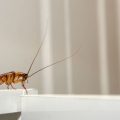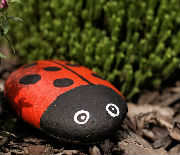
We share our lives and homes with millions of microscopic organisms. One of the most common miniature housemates is dust mites. Although, these microscopic pests do not trigger allergic reactions through direct contact, such as a bite house dust mites can worsen symptoms in people suffering from indoor allergies.
They can cause rhinitis (characterized by a runny nose and watery eyes), eczema or asthma. So, if you or a family member is allergic, read on to learn how to get rid of dust mites and alleviate allergy symptoms.
Table of Contents
What are dust mites?
Dust mites are a member of the arachnid family, closely related to spiders and ticks and can be found in nearly every home. With their tiny size, 0.2 – 0.3 millimetres, and translucent bodies, they are too small to see without a microscope.
These microscopic creatures feed on skin cells that humans shed and flourish in warm, humid conditions. Common household items such as upholstery, bedding, and carpets create a perfect environment for dust mites.
Allergic reactions can arise from exposure to the droppings of house dust mites, which can remain even after the mites themselves have died. By taking steps to get rid of dust mites in your home, you can manage a dust mite allergy.
Check also:
Are dust mites bad for you?
Dust mites can cause skin irritations and allergic reactions. In the UK, they are the most common source of allergies, affecting more people than pollen or other common allergens.
While house dust mites themselves do not trigger allergic responses and do not carry diseases, allergic reactions are caused by their droppings, which contain high levels of protein-based allergens. Additionally, the body fragments of deceased mites can also trigger allergic responses.
Check also:
How do you know if you have dust mites?
If you are allergic to dust mites, you might experience symptoms throughout the entire year. Additionally, you may find that your symptoms are more severe during the warm and humid months. Typical symptoms of a dust mite allergy are:
- Runny nose
- Sneezing
- Swelling of the sinuses
- Nasal congestion (stuffy nose)
- Red, itchy or watery eyes
- Itchiness in the nose, throat or roof of the mouth
- Coughing
- Postnasal drip
- Facial pressure and pain
- Swollen, bluish skin beneath the eyes
A common behaviour in children is frequent upward rubbing of the nose. They are at greater risk as dust mite allergies can develop into asthma and eczema.
If your allergy to dust mites triggers asthma, you might encounter the following symptoms:
- Breathing difficulties
- A sensation of tightness or discomfort in the chest
- A whistling or wheezing noise during exhalation
- Sleep problems due to shortness of breath, coughing, or wheezing
- Periods of coughing or wheezing that worsen with respiratory infections like a cold or the flu
Read more about How to know if you have dust mites.
How to Get Rid of Dust Mites in Your Home
Now that we know what dust mites are and the danger they can pose, it is time to learn how to get rid of them.
Reduce the humidity in your home.
Dust mites love warm, damp environments, so ensure the humidity in your home is below 50%. To reduce humidity levels and prevent dampness from spreading, it’s important to increase ventilation and air your home regularly. If you live in a hot area with high levels of humidity, consider buying a dehumidifier or an air purifier. This will keep your home dry.
Prevent the accumulation of dust
Feather dusters are a no-no in this case because they only stir up dust into the air. Afterwards, it just falls back to the ground again. On the other hand, a damp piece of cloth removes all dust it touches regardless of where it is.
Reduce the number of items that accumulate dust, particularly those that are challenging to clean. Keep decorative items in display cabinets, store books in enclosed cases, and place clothing and other belongings in cupboards or drawers. Periodically wipe window blinds with a damp cloth. Vacuum soft furnishings, curtains, carpets, and floors regularly as well as vacuum mattresses every two weeks.
Hoover with a vacuum cleaner with a HEPA filter or steam clean your carpets and furniture. Also, change the air filter or dust bag in the vacuum cleaner on a regular basis.
Reduce clutter
More items mean more dust, either way you look at it. You can’t clean every item individually every week and frankly, you shouldn’t. Therefore, to reduce the number of dust mites, just lose the items you haven’t used in the last year or store them in a box in the attic. The fewer things you have collecting dust, the better.
Replace old items that collect dust and provide a breeding ground for dust mites.
This may seem like a rather drastic measure to take, but dust mites often live deep inside the fibres, and that’s why they’re and are difficult to remove. If you cannot remove all traces of the mites, they will quickly re-establish themselves. Common household items such as pillows, mattresses, and blankets have shorter lifespans than most people realise which is why it is better to replace them rather than waste your time and money on ineffective cleaning methods.
Wash bedding on high temperature
Remove all covers, sheets and pillowcases from your bed and wash the bedding at a temperature of 60 C (140 F) to kill dust mites. Wash the bedding every two weeks, and dry it in a dryer on a hot setting to effectively get rid of dust mites.
Spring clean/deep clean your home
Wash or dry clean everything that may contain house dust mites – your bedding, curtains, clothing, and children’s toys. Follow this up by cleaning any carpets in your home with an anti-mite carpet shampoo. Be aware though, that anti-mite products contain very strong chemicals and can cause temporary allergic reactions themselves.
Bathe and groom pets
Mites are not overly picky when it comes to who’s dead skin to eat. You’d better brush your pets in the back garden or on your terrace. The point is to keep the old hairs outside of your home. Regular baths and cleaning the pet beds are also recommended as part of the dust mites
Allow as much sunlight into your home as possible
Hang bedding and clothing outside or in areas with a lot of direct sunlight, air-heavy rugs and curtains as often as possible, as direct sunlight kills dust mites.
Are you dealing with a pest infestation?
You don't have to be alone in the battle against pests. Hire a professional pest expert!
Call usWhere do dust mites come from?
Dust mites can be found in every home and thrive in warm (approximately 21°C + ), and humid conditions. Their food source is the dead skin cells and flakes we shed every day so they live in areas that attract the most human traffic, such as carpets, rugs, sofas, beds and soft toys.
Humidity is a key factor in determining the presence of dust mites in a home. Unlike humans, mites don’t drink water – instead, they obtain moisture from the air. Consequently, they can’t thrive in regions characterised by low humidity, such as deserts.
Dust mites enter our homes by hitching a ride on clothing, bird feathers, animal hair and any surface that they can cling to.
Read also: A Simple Guide to Get Rid of Clover Mites
How do you check for dust mites?
Dust mites are often challenging to identify because of their small size. They are invisible to the naked and can be seen only through a microscope. You can find an affordable microscope in toy stores or hobby shops, which you can use to check for dust mites in your home.
Once you have your microscope, use a piece of clear tape to collect a few dust samples from various areas in your house. Then, examine them under the microscope. Ideal places to take samples are less frequently cleaned areas in your bedroom and living room. Be sure to check your bed and sofa, as these are common spots for the accumulation of dead skin cells.
Position the samples under the magnifying lens and look for the tiny eight-legged creatures. If they are not visible, search for their droppings, which appear as small brownish rectangular shapes. This will help you determine if there is a significant presence of dust mites in your home.
How do you prevent dust mites in your house?
Once you have rid your home of dust mites, you will want to prevent them from accumulating again so that your hard work isn’t in vain. Check out the tips below to keep your home as dust-mite-free as possible.
- Clean pillows, mattresses, and bedding regularly. Keeping all sleeping areas in your home clean will prevent a build-up of dead skin, denying dust mites their main food source.
- Replace your pillows every 2-5 years and mattresses every 10 years. Dust mites live in the deepest parts of your pillows and mattresses, so regular cleaning will only help. Replacing these items may be expensive, but it is the best method of preventing dust mites from accumulating over time.
- Invest in hypoallergenic pillows and mattress covers. These covers present an additional barrier between you and allergens, whether dust mites or pollen and are a must-have for allergy sufferers.
- Use bedding made from synthetic materials. Bedding made from synthetic materials such as nylon and memory foam mattresses creates an environment which is unsuitable for dust mites.
- Leave your bed unmade. This isn’t just an excuse to be lazy in the morning! Leaving your bed unmade allows your bedding to air dry and release moisture. This can significantly reduce the number of dust mites calling your bed home.
- Reduce the number of stuffed toys in your home. Stuffed toys provide the perfect safe haven for dust mites as they collect dust easily. Try to cut down the number of stuffed toys to only the favourites. If you or your child cannot bear to part with the toys, freeze them for 24-48 hours every two weeks to kill the dust mites and then wash and dry them thoroughly.
- Try not to sleep on the sofa. Sofas are much more difficult to protect from dust mites than other furniture. By sleeping on the sofa, you are creating an area which is very attractive for dust mites. Try to always sleep in a bed with a hypoallergenic cover to keep the dust mite population down.
Are you dealing with a pest infestation?
You don't have to be alone in the battle against pests. Hire a professional pest expert!
Call usConclusion
So there we have it, everything you need to know about how to get rid of dust mites and how to stop them from coming back. Following this guide and keeping a strict home cleaning schedule, you will not have to worry about developing or exacerbating dust mite allergies.
Image source: Dabarti CGI/shutterstock.com










My house is infested with minute white dust like bugs which are so tiny that it is impossible to believe Thayer are alive , I can’t even see their head , only when they move I can see they are alive, how do I get rid of them?
Do dust mites produce dust ?